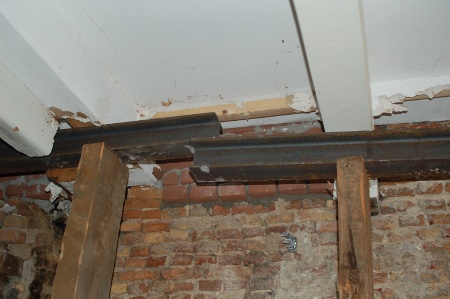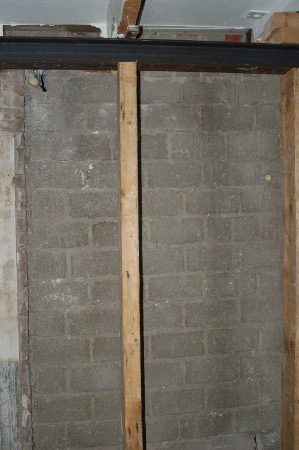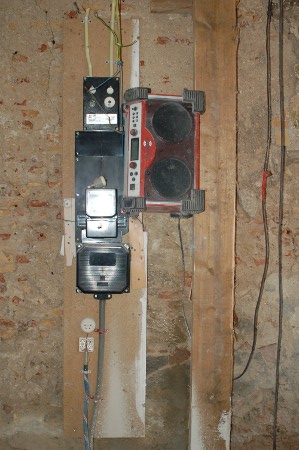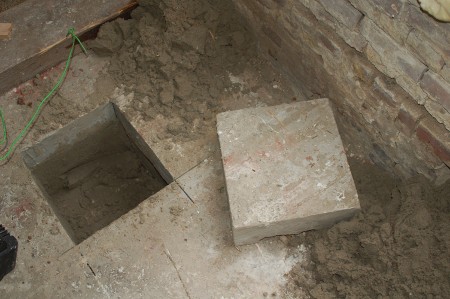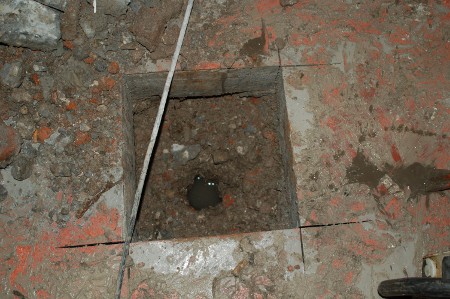This is one of the few vegetarian restaurants Steph and I had never been to before, so we decided to give it a try a few nights ago. It was a really pleasant surprise, so I thought I would write a short review here.
Be sure to call first for a reservation. They often fill up, sometimes a week or more in advance. It’s a small place with limited capacity, and they offer very personal service.
Also, don’t plan dinner too late, because while there’s nothing wrong with the service, it all takes a long time. Our dinner took a little more than 2 hours.
I’m not sure who Betty is. The restaurant run by a very friendly gentleman, and one of the high points of the meal was the time he took to explain everything we were eating.
I have to say that we spoke to him in Dutch and got a far better explanation than the table next to us where he spoke English. While his English was okay, if at all possible you should go with someone who speaks Dutch who can translate. His English was a dramatic simplification of his Dutch. If you’re stuck with English, be sure to press him for a fuller explanation and don’t let him get away with the quick summary.
For example, we had soup made from celeriac or celery root. He explained this to us in Dutch, but told the English speaking table it was celery, which was not completely true.
In fact he’s proud of the food he serves, likes to talk about it, and responded well to the questions I had. Don’t be afraid to point to things on the plate and ask questions.
Regional and Organic
You don’t choose your meal from a menu, but rather they have a daily set menu. You can choose if you just want a main course, or if you want a starter and/or dessert in addition. All of their food is organic and vegetarian, and can generally be made vegan on request. Our meal was vaguely European, but mostly made of local seasonal vegetables with some Mediterranean foods as well.
I have read some reviews on the Internet where they’ve apparently served some Mexican food, but I think mostly they offer European and northern European foods.
The quality of the ingredients was very high, and it was cooked to a very high standard. Both these things are almost unheard of in Amsterdam.
Different parts of the meal had different themes, for example one dish was made of all things bitter tasting. Other dishes emphasized other flavors. There were so many different dishes, that if you didn’t care for 1 or 2 of them, there was lots of other things to eat. Dinner was very filling, and we were served plenty to eat.
Unusual Spices
I’m not sure if this is a regular feature in the restaurant, but one of the important parts of our meal were some very special spices.
If they had just been added to our meal we probably wouldn’t have noticed them. So what he did was come to our table with various bottles of spices, blended in France by someone who specializes in this, and let us smell them first. He then explained what each one contained, then added it to our food. They were really fresh and interesting tasting. Some were a little unusual, but mostly they were relatively ordinary spices blended in a creative and unexpected way.
Organic Wine
I’m used to organic wine sort of being what it is. Usually nice, but in general lacking anything interesting. We had some wine with our meal, and it was really very good. This too came with an explanation, and it was possible to pick out all the flavors our waiter identified in advance.
Dessert
Dessert was well worth having. It was hand made with high quality ingredients.
Sticker Shock
Be prepared to pay for the quality of food received. For the 2 of us, with starters, main course and desserts, together with drinks and tip, our bill was nearly €100 or about US$140. This is about as much as I have ever paid in a restaurant in Amsterdam, and I did find it a little steep.
I’m glad we went, and I think we’ll go back again. If you’re looking for a vegetarian foodie experience in Amsterdam, it’s the only real place to go.




